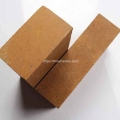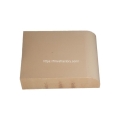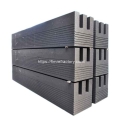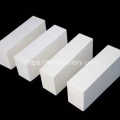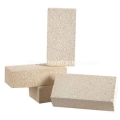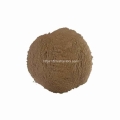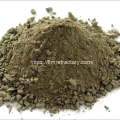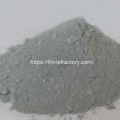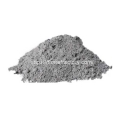- Performance. Innovation. Worldwide. Your trustworthy Refractories Manufacturing Partner--Fireramo
- +86 175 3769 7777
Contact
Contact us on WhatsApp
High Quality Refractory Bricks
Insulation Bricks for Sale
Monolithic Refractory
In industrial production, castables are widely used in various furnaces and equipment as a key high-temperature, wear-resistant, and corrosion-resistant material. However, the cracking problem often occurs after the baking session, which not only affects the performance of the castables, but also may lead to equipment damage and safety hazards. Therefore, we need to understand the causes of cracking after baking and explore reasonable solutions.
Causes of cracking after baking of refractory castables
Unreasonable structural design: Insufficient design or improper form of expansion joints cause the castables to squeeze each other when subjected to thermal expansion, resulting in cracks.
Poor quality of castables: poor matching and combination of aggregate and matrix, or improper preservation of materials leading to moisture deterioration, making the refractory castables easy to crack during baking.
Unreasonable construction process: the construction temperature is too high, the speed is too fast, the baking temperature is not properly controlled, and other factors may lead to the cracking of the castables after baking.
- Alkali Resistant Castable

- Cold Ramming Paste

- Corundum Mullite Castable
- Dry Barrier Mix

- High Alumina Abrasive Castable

- High Alumina Corner Castable

Solution for cracking of castables after baking
Optimize the structure design: Reasonably set the number and form of expansion joints to ensure that the castables can expand freely during the baking process. At the same time, for the key parts, such as the connection between the wear-resistant material and refractory bricks of the entrance flue of the cyclone separator, special attention should be paid to the design of expansion joints in order to prevent cracking.
Improve the quality of castables: choose high-quality castables to ensure good matching and combination of aggregate and matrix. At the same time, strengthen the storage and preservation of the materials to avoid moisture deterioration of the materials.
Improve the construction technology: the construction personnel should fully understand the requirements of the construction technology of the castables and carry out the construction in strict accordance with the requirements. In the construction process, attention should be paid to the control of construction temperature and speed, as well as the control of baking temperature, to ensure that the castables can be uniformly heated in the baking process.
- 70% High Alumina Brick
- Kiln Pillar
- Ascending Pipe Precast Refractory
- Precast Coke Oven Door
- Acid Resistant Brick
- Al-SiC-C Brick
In addition, in order to further improve the quality of the castables after baking, we can also take the following measures:
Strengthen the preparatory work before construction: clean and check the construction environment to ensure that the construction surface is dry, smooth, and free of oil and other impurities. At the same time, stir and mix the castables sufficiently to ensure their homogeneity.
Strengthen the monitoring of the baking process: use the temperature monitoring equipment to monitor the baking temperature in real time to ensure that the baking temperature is controlled within the appropriate range. At the same time, regularly observe the changes in the castables to find and deal with possible cracking problems in time.
Strengthen the later maintenance and management: Regularly inspect and maintain the castables, and find and deal with the cracking problems in time. At the same time, strengthen the maintenance and repair of the equipment to ensure the normal operation and service life of the equipment.
To solve the problem of cracking castables after baking, we need to start with the structural design, quality of castables, construction technology, and other aspects, and take comprehensive measures to improve the quality and performance of castables. Only in this way can we ensure that the castables do not crack, do not damage, do not produce safety hazards after baking, and provide a strong guarantee for the smooth progress of industrial production.
Specializing in refractory materials for over 20 years, we provide professional refractory solutions for the global high temperature industry.
Related Posts:
- Enhancing the Medium Temperature Strength of Refractory Castables
- Ways to ensure the accuracy of refractory brick acceptance results
- Acceptance inspection after cement kiln construction
- Three Common Ways of Damage to the Sliding Nozzle for Ladles
- How to choose and use Kiln Furniture for Firing Ceramics
Theme By Fireramo


